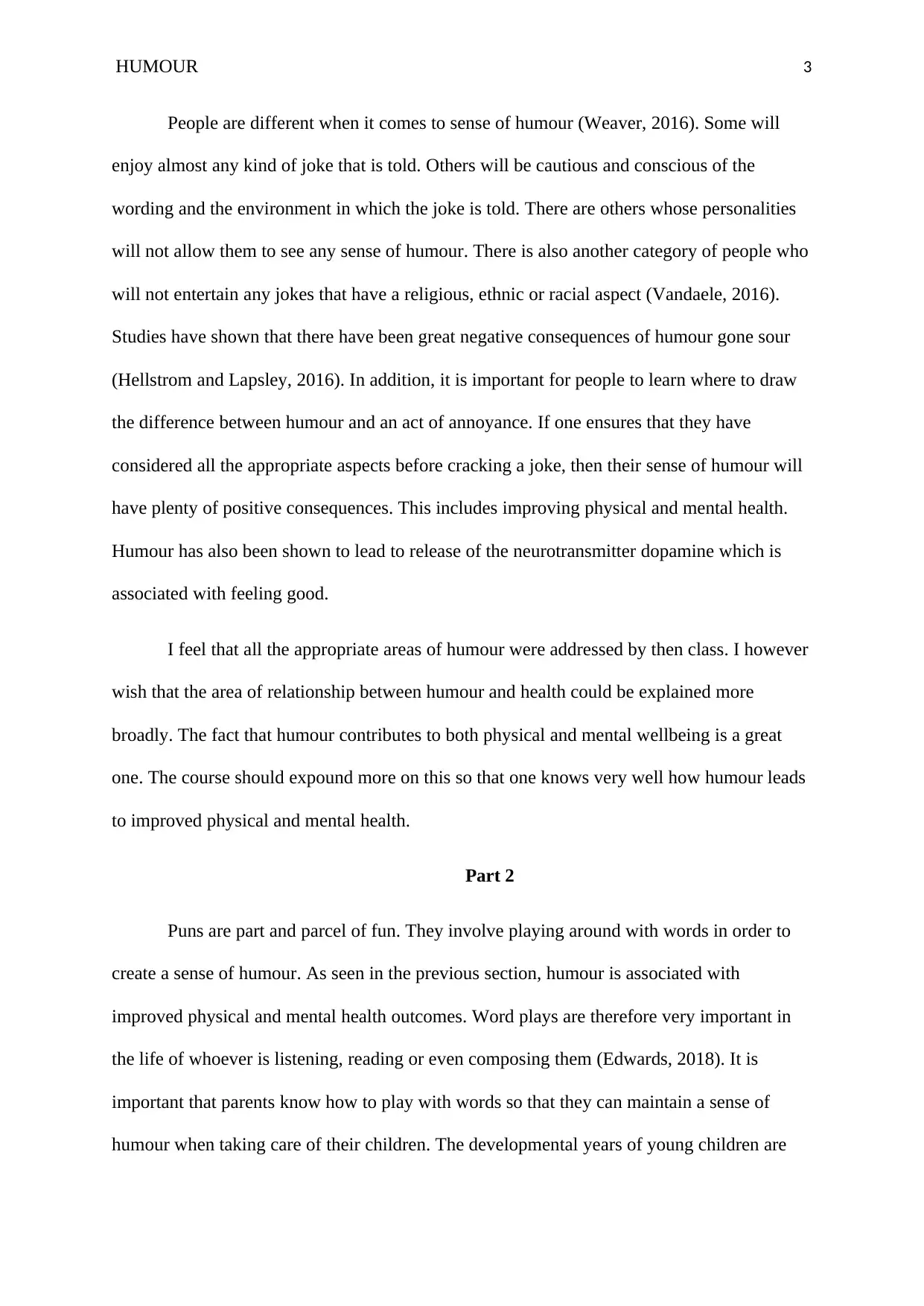Impact of Humor Course: Personal Insights and Humor Consumption
VerifiedAdded on 2023/05/28
|5
|1002
|139
Essay
AI Summary
This essay provides a personal reflection on the student's sense of humor and how their understanding and consumption of humor have been shaped by a course. It discusses the student's enjoyment of humorous activities, their self-assessment of having a substantial degree of humor, and how the course has transformed them into a more cautious consumer of humor, emphasizing the importance of considering the environment and audience before telling jokes. The essay also touches on the varied senses of humor among people and the potential negative consequences of humor gone wrong, while highlighting the positive impacts of humor on physical and mental health, particularly through the release of dopamine. Furthermore, it briefly explores the role of puns and wordplays in creating a sense of humor and their importance in children's health and development. Desklib provides a platform for students to access similar essays and study resources.
1 out of 5












![[object Object]](/_next/static/media/star-bottom.7253800d.svg)